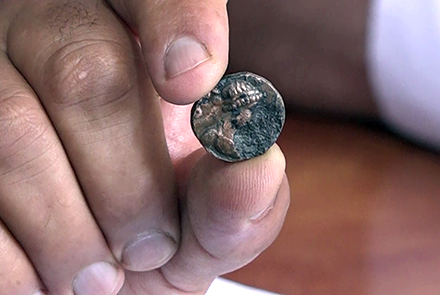The Archaeology Institute of Afghanistan has announced that out of 4,000 archeological sites identified in the country, only 2,200 of them have been registered with complete details in the database of the institution, and no accurate details are available about the remaining sites.
Of the 2,200 registered archeological sites, only about 100 sites have been excavated by the government in the last 100 years.
According to historical documents, the start of professional archeological excavation in Afghanistan goes back to the Shah Amanullah era.
The Afghan government signed a Memorandum of Understanding (MoU), valid for 30 years, with the French government regarding the joint excavation of archeological sites in Afghanistan. According to the MoU, France was entitled as owner for each of two artifacts that were discovered.
The signing of the archeology MoU between France and the Afghan government paved the way for professional archeological excavations in the country. The MoU had 13 chapters and was valid for 30 years. It allowed 19 French archaeologists to travel to Afghanistan and begin excavations.
Chapter 7 of the MoU stated that “excluding the exquisite and precious objects, half of the other artifacts found after excavations will be given to the French government.”
“In the past, we did not have enough capacity in archeology, and this led to the granting of many benefits to the French government,” said Khair Mohammad Khairzadeh, director of the excavation department at the Archeology Institute of Afghanistan.
The archeological MoU between France and Afghanistan was valid for sixty years, but today the Afghan government does not know how many artifacts were discovered during those 60 years and how many were handed over to France.
According to the Afghan government officials, all the documents related to the MoU were destroyed or lost during the civil wars in the country.
Sultan Masoud Moradi, a restorer of antiquities, stated: “All the artifacts that are being found through excavations are polluted and contaminated with oxides and other impurities.”
Mohammad Rabi Saberi, head of the restoration department of the Archeology Institute of Afghanistan, said: “3,053 artifacts were brought to the laboratory of the restoration and repair department in the Archeology Institute of Afghanistan in the year 1399.”
In the past 100 years of archeological excavations in Afghanistan, more than 10,000 gold and silver coins, along with other antiquities were found and recovered from the country's ancient sites.
Ali Haidari, who is a surveyor working in the archeology sector, said: “We can never see the caves through the satellite images, the caves are registered with us, but we just don’t have accurate information about them, and we also don’t know their exact locations.”
Currently, 10 archeological sites in the seven provinces across the country are being excavated by the Afghan government.

